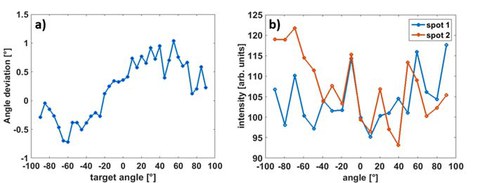Tomographic refractive index measurement using Adaptive fiber-optical cell ROTation (TAROT)
The three-dimensional refractive index (RI) distribution of biological cells contains
rich information on the metabolism, health and on intracellular structure. An important
biophysical parameter that can be accessed without invasive cell staining
by quantitative phase imaging (QPI). As QPI techniques are sensitive to integral
path-length information the reconstruction of the three dimensional refractive
index requires a multitude of projections under varying angles to enable 3D reconstruction
using tomographic approaches. Changing the illumination angle via
rotation of the specimen bears maximum spatial frequency coverage and is
therefore advantageous compared to variation of the illumination angle.
In this project, we aim to realize a versatile adaptive optical platform based on a
novel dual-beam trap that enables for the first-time targeted cell-rotation about
arbitrary axes in all spatial dimensions. The unique feature of our dual-beam trap
is that light-delivery is accomplished by multi-core fibers (MCF) as key components
of the system. Using an in-situ calibration by digital optical phase conjugation
allows tailoring any desired light field distribution. To rotate the cells about
the optical axis at least one beam has to have an asymmetric intensity profile to
break the trap symmetry. Adaptively rotating this intensity profile results in a cellrotation.
The full light-field control further enables to induce additional targeted
rotation by misaligning the traps or by illuminating with tailored intensity-gradients,
enabling rotation in three dimensions. Quantitative phase imaging with full
cell-rotation about two perpendicular axes will be realizable for the first time.
Staff: N. Koukourakis
Period: 01/19 - 12/21
Partner: BIOTEC, Dresden, Prof. Jochen Guck

Rotated asymmetric intensity profile.


